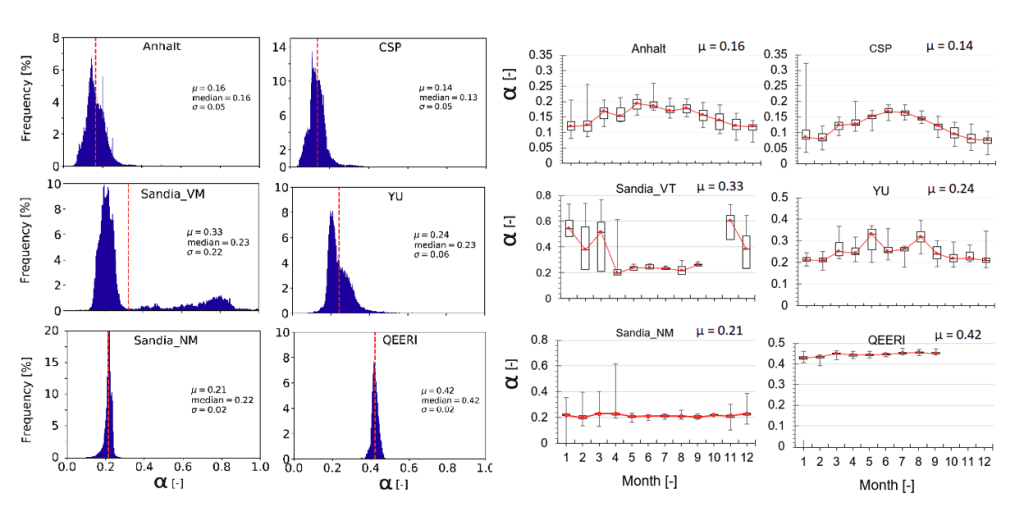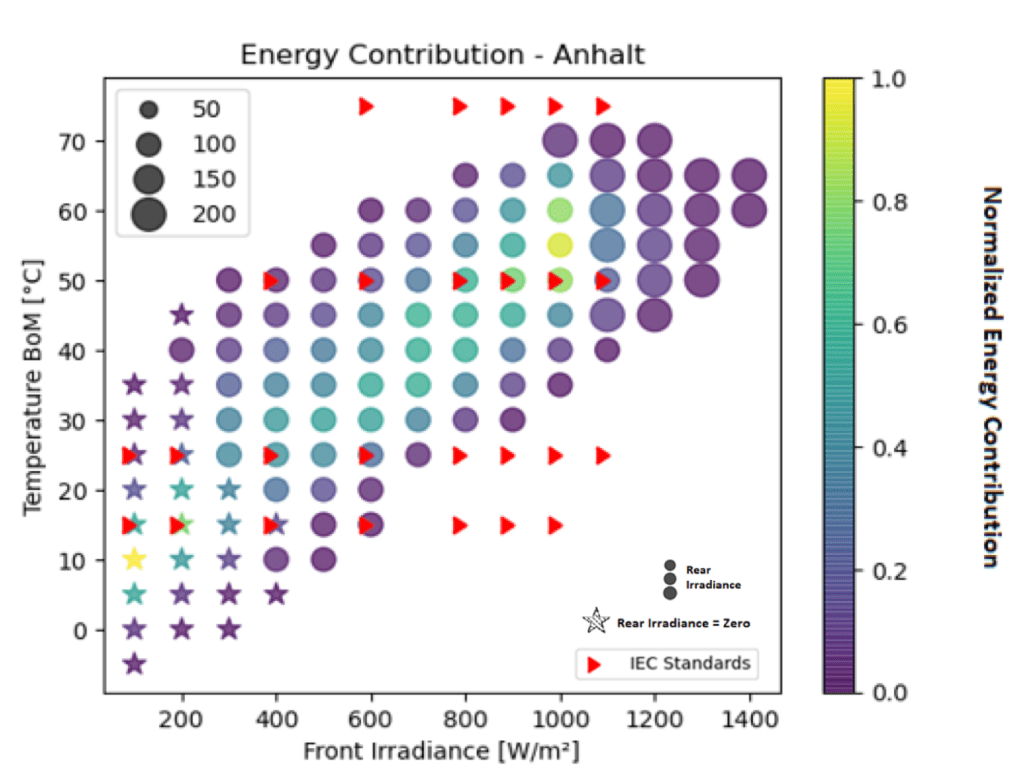Energy Prediction for Bifacial Photovoltaic Modules and Systems
Sebastian Dittmann¹’², Ralph Gottschalg¹’², Norbert Bernhard¹
E-Mail: sebastian.dittmann@hs-anhalt.de
1 Hochschule Anhalt University of Applied Sciences, 06366 Köthen (Anhalt)
2 Fraunhofer-Center für Silizium-Photovoltaik CSP, Halle (Saale)
Proposal
The project, “Energy Prediction for Bifacial Photovoltaic (PV) Modules and Systems”, aims to develop measurement devices and methods to improve the electrical characterization and the prediction of the energy yield of bifacial PV modules. The novelty of this proposal is an enhanced characterization of bifacial PV modules at energy-relevant conditions with a flexible double-side sun simulator based on light emitting diodes (LED). An advanced energy prediction model will consider the measurement uncertainty of all relevant input data, such as meteorological data, e.g., albedo.
Objectives
I. Develop a sun simulator with two independent light sources based on light emitted diodes (LED) (adjustable in irradiance and spectrum) to characterize bifacial PV modules close to realistic conditions;
II. Develop indoor measurement methods and define realistic indoor measurements, which include different combined front- and rear-side irradiance, including spectral changes;
III. Develop outdoor test facility for bifacial modules energy yield measurement and rear-side irradiance measurement;
IV. Development of an energy prediction model for bifacial PV modules and systems;
V. Estimating the dedicated measurement uncertainty of (i, ii, and iii) and the overall uncertainty of the energy prediction module.

Side dependent albedo and power rating matrix
In the moderate climates α is wider distributed around the mean value while in the desert climates we see a very narrow distribution around the mean. At Sandia_VT two maxima are formed in the distribution. One around 0.2 which represent the summer month and around 0.7 whish represent the winter months with snow cover.

Comparison of the IEC 61853-1 power rating matrix with real measured data show that current IEC definition do not represent the reality für bifacial PV modules

Literature
[1] G. Koutsourakis, M. Rauer, S. Dittmann, W. Herrmann, R.P. Kenny, S. Winter , et al., „Characterization of Bifacial PV Mini-Modules Using Front – and Double-Side Illumination”, 2020, 32nd EUPVSEC
[2] S. Dittmann, H. Sánchez, L. Burnham, R. Gottschalg, “Comparative Analysis of Albedo Measurements (Plane-of-Array, Horizontal) at Multiple Sites Worldwide”, 2019, 36th EUPVSEC
[3] G.L. Martins, S. Dittmann, L. Burnham, R. Gottschalg, „Energy Contribution of Rear-Side Irradiance for Bifacial Photovoltaic Modules”, 2021, 38th EUPVSEC
[4] International Electrotechnical Commission, “IEC 61853-1:2011: Photovoltaic (PV) module performance testing and energy rating – Part 1: Irradiance and temperature performance measurements and power rating “, 2011.
